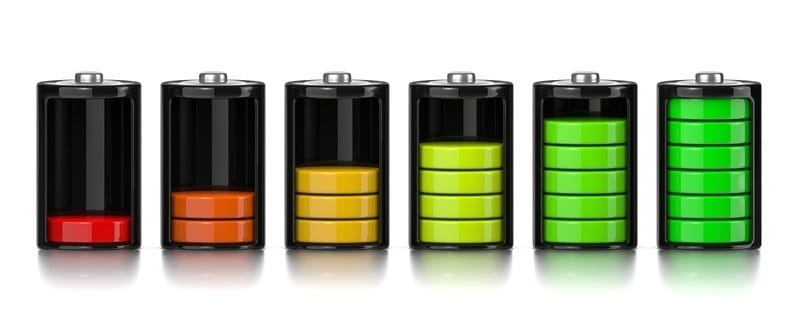
How Modern Batteries Work
Batteries are an incredible thing. Something less than half the size of your smartphone can power it for hours. What exactly goes on in there? A battery is really a chemical reaction between three elements that create an electric charge. Let’s see how modern batteries work.
Think of your classic battery, the one used to power your clock for example. This is a steel can inside of which is housed in part one of the battery: the cathode. The cathode is a finely ground manganese oxide powder. This cathode, also commonly referred to as an electrode, has a positive charge and a naturally occurring electrical charge. This means it holds the positive element of the electric current. It is moulded to go around the inside of the steel case and is connected to the positive end of the battery case.
Next, a piece of porous piece of paper or cardboard is inserted to keep the chemical components from physically touching each other. Then, the anode, which is liquid zinc, is pumped into the casing. The zinc anode carries the negatively charged ions needed for the battery to work. This is what is connected to the negative end of your battery. Finally, there is the electrolyte, a chemical mixture of potassium hydroxide that aids in the chemical reaction. The electrolyte helps to connect the different chemicals of the cathode (positive) and anode (negative) and allow an electrical charge to flow. This electrolyte can be on its own, but more often than not, it is mixed with either the powdered cathode or the zinc anode.
Left like this the elements do nothing. You have to complete the circuit in order for the reaction to take place. Once you insert your battery into your device the electrolyte oxides the zinc anodes. This means once the circuit is completed the anode releases its negative ions into the electrolyte, which oxides the zinc in the battery. The cathode can now react with this newly formed oxidized zinc to form an electric charge. The electrolyte mixture then converts the stored chemical energy into electrical energy.
The final part of the battery is made of either a brass pin or a carbon rod. This rod is called the negative current collector and is placed at the negative end of the battery. The negative current collector conducts the electricity and brings it to your device, completing the circuit. The electrons now enter from the positive end, moving back into the cathode, where they react again with the anode, are conducted back through the negative end to your device.
This chemical reaction process changes the chemicals in the anode and cathode, which will eventually cause them to stop supplying the electrons needed to produce electricity. However, rechargeable batteries do not run into this issue because other power sources, such as solar panels, change effectively reverse the flow of electrons. This reverse inflow restores the positive and negative ends of the battery, recharging it to its original state.
If you need a high-quality battery, Polar Battery supply many of them. Contact us today in Burnaby or Kamloops for great prices, great quality, and the know-how to help you best.
